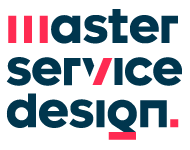In August 2014 the Administration of USA released the initial version of a Digital Services Playbook. The playbook outlines 13 key plays that will help government and administration to build effective digital services that will be able to meet the needs of the citizens.
The key plays are drawn from private and public-sector best practices and, if followed together, will help federal agencies deliver services that work well for users and require less time and money to develop and operate.
The first play is understand what people need. From this play is clear that the spotlight of the initiative is on the people: it’s crucial that the policy makers understand deeply the needs of people because are those needs that should drive technical decisions.
Address the whole experience, from start to finish is the second one. While designing a digital services you must keep in mind the whole experience, both online and offline, and also the different ways that people currently used to accomplish the task the digital services will do.
The third is simply this: make it simple and intuitive. A services is well-designed when the users doesn’t even realize he is using it. Users must succeed the first time.
The seven play is fundamental for any successful project: bring in experiences teams. Designing for a government means working for the entire citizenship and for the welfare of your country, so having talented and experienced persons is mandatory.
The last two plays are very up to date: use data to drive decisions and default to open.
Big data deduced from internet are an important resource nowadays; in a digital services we should measure how well the service is working for the users.
In the same time a digital services designed for government’s improvement should publish his data in order to collaborate more openly with the citizen and to be more transparent.
The Digital Services Playbook is an example of the benefits that service design can give in different fields from public to private. The playbook is a tool with guidelines, checklist and key questions for each play but it’s also a service in itself to guide the policy makers and governors to change their prospectives and start looking through the eye of the citizen.
To see all the plays: link

